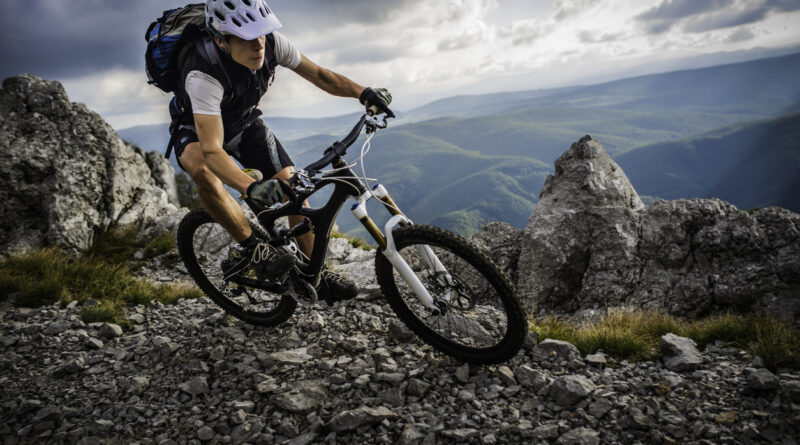How to Choose a Best Mountain Bike |Buying Tips
Buying a mountain bike can be confusing if you don’t know how to tell your 29ers from your 29ers, or your enduro from the XC. We have compiled a guide to help you select the right bike for you and your riding style.
How to Choose the Right Mountain Bike
Mountain bikes are an investment in fitness and friendship. It makes sense to choose a bike that is both comfortable and provides maximum enjoyment.
Because MTBs are made for different terrains, it is important to consider the terrain that you will ride on when purchasing.
The main differences between frame geometry and suspension are their structure. The main contrasts are frame design and suspension. Frame design affects everything, from durability and speed to stability, ride comfort and control, as well as pedalling efficiency.
Although bikes can be used in many different disciplines, they are most effective when used for their intended purpose. This is where you should consider where you’ll ride your bike, but let’s first talk about suspension.
Suspension
Hardtail Bikes
A hardtail has suspension forks at the front and no suspension at the back. These are common in entry-level commuters, XC, and trail steeds.
They are fast and can often be purchased at a lower price. They can be bumpy on rough terrain. Although these bikes aren’t able to absorb any errors as well as a full-suspension bike, some people feel that this is a good thing. Dual suspension can help mask bad habits. Hardtails are also easier to service and maintain.
Full suspension bikes:
These MTBs are great for those who want to learn how to ride off-road.
Although they are more costly, they can be a great investment in comfort, control, and confidence. Dual suspension allows for easier passage over technical terrain, while the rear suspension improves traction by keeping the back wheel on the ground.
Suspension travel:
Each suspension has a specific amount of “travel”, which is the compression and rebound that reduces impacts and improves rider handling. There is less travel in XCs where efficiency and weight are paramount, but there is more travel on enduro bikes and downhill machines that absorb big bumps and landings while riders race over jumps, drops, and technical sections at high speed.
A bike with more travel will feel more cushiony, but there is a compromise. On climbs, a bike with too much travel will not be as efficient and easy to pedal.
Here we will discuss the types of trails and disciplines you will be riding. Let’s begin!
MTB Disciplines
Sport/Recreation – Entry-level hardtail for simple paths
These bikes are less a true mountain bikes, and more a gateway to the world of MTB. They’re great for commuters or those who just want to ride basic, groomed trails. These bikes are affordable and you can get the best mountain bike under 1000 dollars. These bikes are great for those who enjoy mountain biking but don’t want to spend too much or go too far off-road.
- Urban commuters, smooth cycling paths or gravel roads
- It’s suitable for basic riding but not durable enough to withstand rough terrain.
Cross-country: Speedy, fast-rolling bikes suitable for racing or leisure
Cross-country (XC), covers all aspects of cross-country riding, from long leisure rides on simple trails to racing on technical singletrack. For greater control and comfort, you can either buy a hardtail or a full suspension steed. The suspension on XCs is less than that of their trail, enduro, and downhill counterparts. They are lightweight and stiff and designed for speed, distance, and climbing. Think:
- Forestry roads that lead to intermediate trails or moderately technical singletrack
- Hardtail or complete suspension starting at 60-120mm travel
- To reduce rolling resistance, tyres have typically less tread
Trail/All-mountain: You can do it all on your bike, from long-distance epics to quick laps
Trail bikes can be fast uphill, but they are also fun downhill. These bikes are best suited for riding in the sweet spot between XC or rowdy enduro. However, they can easily be used to cross into other areas. These machines are great for beginners, and they can be ridden on a variety of terrains.
- From single-track fun to more technical trails, there are many options.
- Hardtail suspension or full suspension with a cushiony 120-160mm travel
- XC treads have a wider and knobbier tire than XC.
- Popular options are the 27.5″ and 29-inch wheels
Enduro: A sport that allows for spectacular descents and then returns to the top for more.
A mountain bike is perfect for those who love jumps, drops, and fast descents. A downhill enduro bike is designed for timed descents on different tracks, with riders pedaling to the top of each descent. They are designed to go down fast and be stable, but also to climb back up. Think:
- Technical descents that have more features and obstacles
- Full suspension with typically 150-180mm travel
- Stability with puncture-resistant, tough tires
- The dropper post allows for easy adjustment of seat height on-the-go
Downhill: The best bike for demanding descents.
These bikes are the Rolls Royce of comfort, for those who enjoy challenging themselves on technical downhill trails. Norco Fluid 329 is the best mountain bike under 2000. It’s got all the gear you need to tackle steep uphills or downhills.
- You will have to ride steep and difficult descents. There is no climbing
- Full suspension with travel typically upwards of 190mm
- To be strong and steady downhill
- For increased traction, tough, puncture-resistant tyres that are grippy and puncture-resistant
MTB Wheel Size
There are three sizes of adult mountain bikes. The 26-inch-wheeled models have been phased out in favor of the 27.5-inch tyres, and the more popular 29ers.
Some consider 27.5ers to be the ultimate hybrid. They combine the agility and fun handling of a 26 inch wheel with the increased stability of a 29er. These wheels are strong, light, and agile. They also feel good on the ground because of their small size. These wheels are popular with beginners and are easier to handle for small children and older adults.
The 29er bikes, on the other hand, are more difficult to maneuver and have greater momentum. They roll faster and have better traction. The wheels are also “planted”, meaning they can be rolled with smooth stability and confidence on technical terrain. In race bikes, efficiency is a key factor. Manufacturers are increasingly using 29-inch wheels.
Frame Material
The main choices are steel, alloy, and carbon. Due to its responsiveness and lightness, a high-end carbon steed will be the best machine. Aluminum is more affordable and durable but slightly heavier and less comfortable to ride. Steel is also available, although it’s less common. This has a great ride quality but comes with a weight penalty.
It’s up to you what weight you prefer. It’s important to get the right size and fit for your riding, as well as the correct components.
Size of the bike
Size guides should be included on most bikes. If you shop in our showrooms, our staff can help you determine the right size. The top tube should allow you to stand comfortably and not feel too restricted or extended while riding. After the seat is adjusted, this applies to your arms, torso, as well as your legs.
Benefits of Buying New
The bike industry has changed dramatically over the last few years.
You can be sure that your MTB hasn’t had any previous wear and tear. E.g. It’s possible that second-hand carbon frames have been damaged or crashed, but it’s difficult to determine the extent of structural damage. You may also be eligible for manufacturer warranties. Some last years, others a lifetime.
Evo offers a variety of service plans that will save you money and give you peace of mind. You can also enjoy the excitement of a brand new bike…
You can also read: Tips For Buying An Hovsco E Bike



